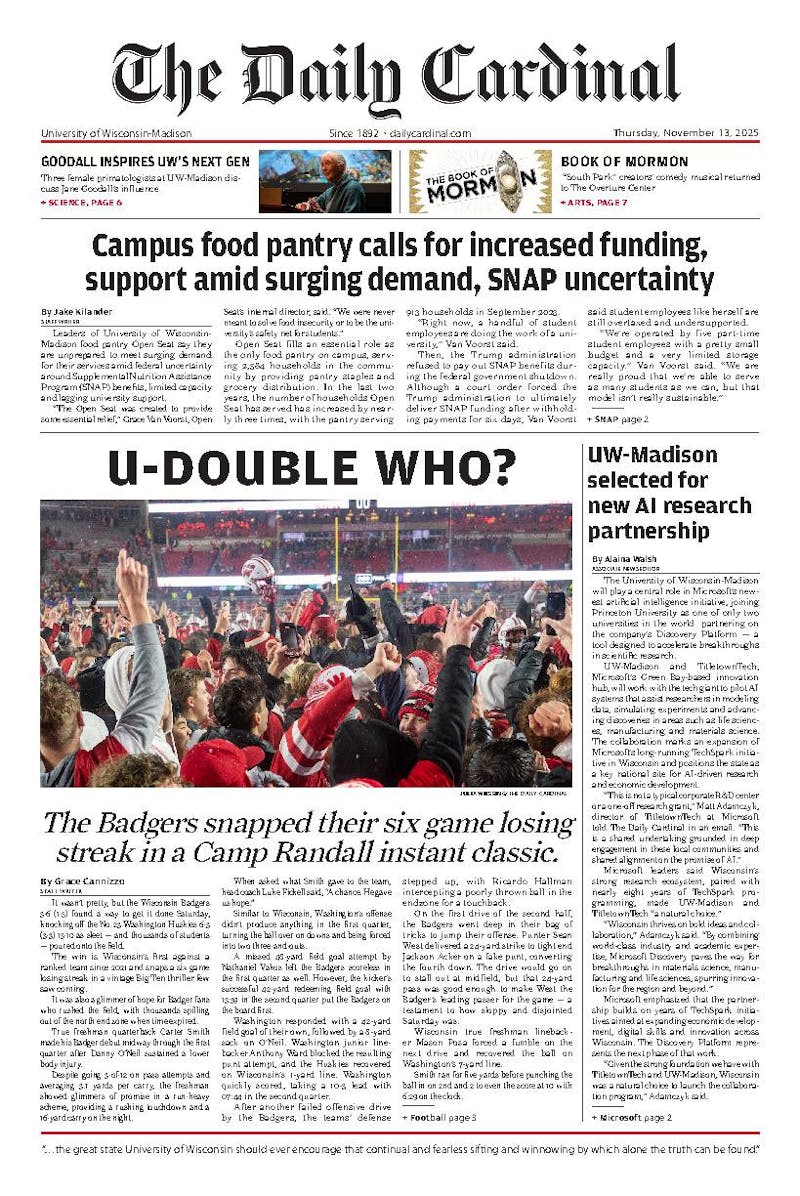Altered Geometry,"" the newly opened exhibit at the Madison Museum of Contemporary Art, is not for the faint of heart when it comes to modern art. The exhibit boasts eight sculptures from the MMoCA's permanent collection, each demonstrating the quintessential ideals of what contemporary sculpture should look like: abstract, large and minimal. The pieces, all created within the past two decades, were purchased following an exhibit that featured the artist, showing the museum's dedication to supporting living artists.
Each of the eight pieces concern form and elementary geometric shape, touching upon a minimalistic appearance, but differentiating themselves through manipulation of materials, methods and treatments.
A large and commanding piece is ""Untitled (Cone with Semicircle)"" by Erik Levine. This wooden piece looks similar to a child's spinning top that has been balanced perfectly on its side. The piece seems to possess machine-like precision because of its seemingly unbalanced weight and exact lines. However, upon closer inspection, it has an unfinished surface that shows the artist's craftsmanship and handiwork, creating a pull between machine and hand - a theme present throughout the show.
A large piece that stands out and provokes curiosity is Donald Lipski's ""The East."" Lipski's piece draws viewers in and leaves them puzzled, because the enormous, perfectly shaped ball of plastic pallet wrap contains something inside. The object, a metal buoy, is only visible by the two odd-shaped protrusions at each side of the ball. The wrap, while protecting the buoy, also obscures and distorts its visibility.
Another peculiar sculpture, the culmination of two separate pieces, is ""Untitled"" by John Hughes. The bottom piece is a rounded dish with an opening in the center. The top piece is suspended from the ceiling and cylindrical, with a tapered end that seems to fit almost perfectly in the opening of the rounded dish. This sculpture melds together geometric and biomorphic forms and different types of woods and metals to create a piece that reveals a careful and poignant sense of rhythm and balance. Just like Levine's sculpture, the piece contains an opening that allows the viewer to see the craftsmanship, allowing for this paradox of machine-like precision and balance and the look and feel of hand craftsmanship.
David Nash's ""Cracking Box"" is a wooden cube made up of smaller cubes that are held together and supported by wooden pegs. The piece, however, has been treated and created in a way that lends its wood to warping and cracking, creating an imperfect cube that seems like it could fall apart at any minute. While the cube is a staple of minimalist sculptures, this piece shies away from traditionalism through its use of non-industrial materials and its destruction of machine-like precision and craftsmanship.
Overall, ""Altered Geometry"" portrays the archetypal elements of contemporary and minimalist sculpture but strives for more than that. The featured sculptures play on the side of paradox through their rejection of minimalism, and the conflict between the look and feel of the geometric objects' machine-like precision hints at the artist's hand at work.






